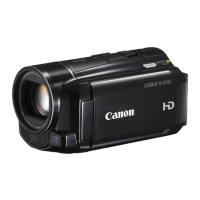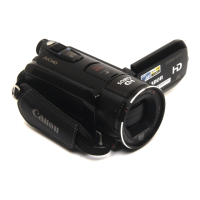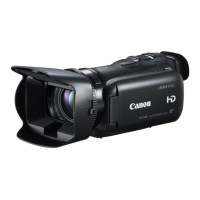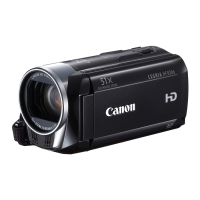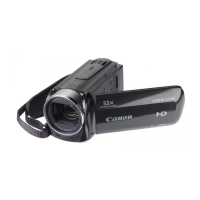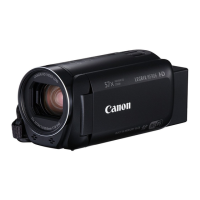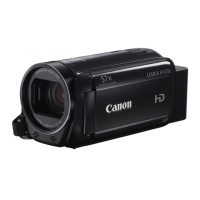
Do you have a question about the Canon LEGRIA HF M31 and is the answer not in the manual?
| Filter size | 37 mm |
|---|---|
| Digital zoom | 300 x |
| Optical zoom | 15 x |
| Image stabilizer | Yes |
| Focal length range | 4.1 - 61.5 mm |
| Focal length (35mm film equivalent) | 39.5 - 711 mm |
| Sensor type | CMOS |
| Total megapixels | 3.89 MP |
| Optical sensor size | 1/4 \ |
| Effective megapixels (movie) | 2990000 MP |
| Closest focusing distance | 0.1 m |
| Display diagonal | 2.7 \ |
| Focus | TTL |
| Interface | USB 2.0 |
| Video out | 1 |
| Photo effects | Black&White, Neutral, Sepia, Skin tones, Vivid |
| Minimum illumination | 0.4 lx |
| Maximum video resolution | 1920 x 1080 pixels |
| Still image resolution(s) | 640 x 480, 1600 x 1200, 2304 x 1296 |
| Audio system | Dolby Digital 5.1 |
| Camera shutter speed | 1/2 - 1/2000 s |
| USB 2.0 ports quantity | USB 2.0 ports have a data transmission speed of 480 Mbps, and are backwards compatible with USB 1.1 ports. You can connect all kinds of peripheral devices to them. |
| Flash memory | 4 GB |
| Compatible memory cards | SD, SDHC |
| Internal storage capacity | 32 GB |
| Product color | Black |
| Battery type | BP-808 |
| Battery life (max) | 1.6 h |
| Bundled software | PIXELA ImageMixer 3 SE Music Transfer |
| Depth | 123 mm |
|---|---|
| Width | 68 mm |
| Height | 60 mm |
| Weight | 320 g |
Critical safety information regarding electrical hazards, fire risks, and proper usage.
Details on video resolution, image sensor, and AVCHD recording format.
Explains using built-in memory and external memory cards for storage.
Automatic scene selection and features like Face Detection and Image Stabilization.
How to connect to TVs, upload to the web, and convert video formats.
Lists included accessories and identifies external camcorder components.
Detailed identification of parts on the Left, Right, and Front views of the camcorder.
Identifies bottom view components and details the wireless controller functions.
Guide to initial camcorder setup, including battery charging and power connection.
Instructions for preparing and using the wireless controller accessory.
How to attach and adjust the grip belt for secure and comfortable handling.
Steps for rotating the LCD panel and adjusting its brightness settings.
Explains touch, drag, and swipe gestures for interacting with the camcorder's interface.
Details on switching modes and using the camcorder's menu system.
Configuring the camcorder's clock, date format, and time zone settings.
Changing the user interface language and setting the correct time zone.
Information on compatible memory cards and proper handling procedures.
Procedures for inserting/removing cards and selecting recording media.
How to enable continuous recording by switching between built-in and memory card storage.
Steps for initializing memory cards or built-in memory for optimal performance or data wiping.
Recording video and photos using the camcorder's automatic Dual Shot mode.
How to use the zoom lever, buttons, and on-screen controls for magnification.
Enabling fast startup for recording by opening the LCD panel.
Steps for playing back recorded video files and navigating through index screens.
Selecting content for playback using the index screen and its various views.
A visual method for displaying video recordings in a 3D layout organized by date.
Removing video scenes to free up memory space and manage the content.
Using Manual mode for full creative control over video recording parameters.
Choosing recording modes to balance quality and recording time.
Utilizing preset scene modes for optimal results in various conditions.
Selecting and using image stabilization features to reduce motion blur.
How face detection automatically adjusts settings for clear portraits and group shots.
Tracking moving subjects to maintain focus and optimal settings during recording.
Adjusting shutter speed and aperture manually for precise exposure control.
Adjusting white balance to ensure natural color reproduction under various lighting conditions.
Modifying color saturation, contrast, and sharpness for unique visual styles.
Activating the mini video light for shooting in low-light environments.
Setting a delay before recording starts for group photos or self-portraits.
Fine-tuning audio input levels for optimal sound recording quality.
Connecting headphones to monitor audio levels and playback.
Guidelines for attaching external microphones and video lights to the mini advanced shoe.
How to operate the camcorder remotely using zoom remote controllers.
Selecting specific points within a video scene to begin playback using the timeline ruler.
Playing back scenes or photo slideshows with background music from supplied tracks.
Turning onscreen displays, icons, and data codes on or off as needed.
Adding, deleting, and arranging scenes into custom playlists for playback.
Extracting still photos or short video clips from recorded movie scenes.
Splitting recorded scenes into smaller segments for easier editing or management.
Viewing recorded still images on the camcorder screen.
Removing photos to free up memory space and manage the photo library.
Using Manual mode for greater control over photo capture settings.
Reviewing photos after capture and selecting size and quality settings.
Configuring the flash for different shooting conditions and effects.
Capturing multiple photos in sequence or with varying exposures.
Capturing still photos while simultaneously recording video clips.
Understanding and selecting light metering modes for optimal exposure control.
Creating and playing photo slideshows with optional background music and transitions.
Zooming into photos during playback to examine details.
Rotating photos for correct orientation and using histograms to assess exposure.
Marking photos as protected to safeguard them from accidental erasure.
Connecting to PictBridge printers for direct photo printing from the camcorder.
Setting print orders and troubleshooting common printing errors.
Identifying and understanding the function of all physical connection ports on the camcorder.
Detailed steps and considerations for connecting to HDTVs using HDMI for high-quality output.
Connecting to TVs using component (HD) and composite (SD) video cables.
Connecting the camcorder to computers or printers using the USB cable.
Guide to connecting the camcorder to a TV and playing back recordings.
Transferring video scenes and photos from the camcorder's internal memory to a memory card.
Transferring video files and photos to a computer for backup and management.
Utilizing supplied software to save and organize photos on a computer.
Converting high-definition video scenes into standard definition format suitable for DVD.
Burning converted standard definition scenes onto DVDs using computer software.
Methods for copying recordings in HD or SD to external devices.
Converting movies to standard definition for wireless upload to video sharing sites.
Step-by-step guide for converting video scenes into standard definition for web or DVD.
Procedures for connecting the camcorder to a computer to upload converted videos.
Enabling automatic wireless uploads of movies to video sharing websites using Eye-Fi cards.
Reference lists for menu options, settings, and FUNC. panel functions.
Configuration settings for digital zoom, focus, image stabilization, and audio.
Configuring photo quality, size, capture modes, and numbering.
Key checks to perform before diagnosing more complex problems with the camcorder.
Solutions for power-related issues and problems starting recordings.
Troubleshooting focus problems, image warping, and slow mode switching.
Resolving issues with dark screens, repeated display issues, sound problems, and visual artifacts.
Troubleshooting problems related to memory cards, wireless uploads, and controller functionality.
Explanations and solutions for various error messages encountered during operation.
Resolving problems with video noise, lack of image, or sound when connected to external devices.
Troubleshooting issues with printing photos and saving files to a computer.
Guidelines for cleaning, handling the touch screen, and protecting the camcorder from damage.
Important safety instructions and long-term storage recommendations for the battery pack.
Precautions for handling memory cards to prevent damage, data corruption, or accidental erasure.
Information on the camcorder's built-in battery and safety for the lithium button battery.
Procedures for securely deleting data from the camcorder or memory card before disposal.
Instructions for cleaning the camcorder body, lens, AF sensor, and touch screen.
Tips to prevent condensation formation by managing temperature changes.
Information on power sources and TV system compatibility for international use.
Lists all available accessories, both supplied and optional, for enhancing camcorder functionality.
Details on compatible battery packs and the recommended battery charger.
Tables providing approximate charging times and recording/playback battery life.
Estimated battery life when using memory cards with different recording modes.
Descriptions of optional audio, lighting, and filter accessories.
Information on optional remote controls, video flash lights, carrying cases, and waterproof cases.
Technical details on recording system, media, and maximum recording times.
Specifications related to the lens, autofocus, illumination requirements, and external terminals.
Specifications for power supply, consumption, dimensions, and weight of the camcorder.
Technical details for the compact power adapter and the BP-808 battery pack.
Information on compatible music file formats and their storage structure.


